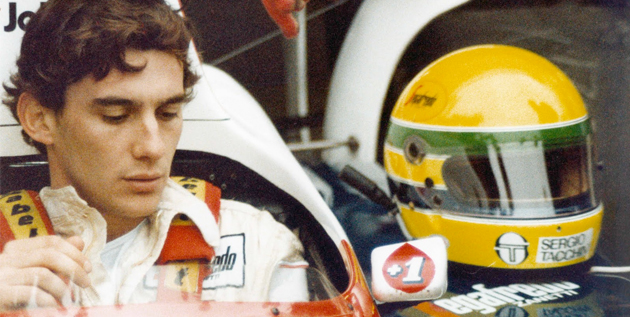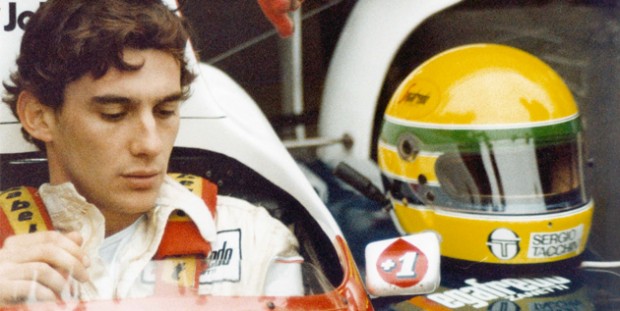I was recently afforded the opportunity to sit down with the BAFTA-winning director Asif Kapadia to discuss his new documentary film Senna, based on the life of Formula 1 racing legend Ayrton Senna. We discussed the film over some cupcakes and a bottle of somewhat-cold ginger ale. He was a thoughtful and exhaustive subject and could have easily talked about this film way into the night. After seeing the fantastic film, one can’t fault him for being proud of what he and his team accomplished. My questions are in bold, Asif (the good LiverpoolFC fan that he is) responds in plain text.
TFS: It’s a wonderful film. Very immersive, very good, very quick–
AK: –Did you know anything about him before?
I knew nothing about him.
See, how do you review a film without giving away anything?
That’s a hell of a question.
That’s my job for you: don’t ruin the ending.
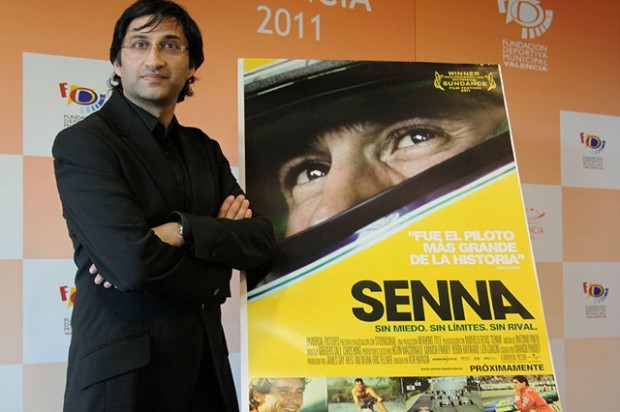 Well I’ll start with that. How do you approach a movie based on someone’s life?
Well I’ll start with that. How do you approach a movie based on someone’s life?
We talked about it a lot. The idea is, well, we’re making a film for the fans. We’re making a film for people who know about Formula 1, who know about Senna, but it’s vital that the film worked for people who knew nothing, people who can’t stand sport, whose hell is the idea of people going “RRRRAWWRRRRR” for 200 miles an hour in circles, y’know? And all who’ve never heard of Senna. So, somehow, the film had to work on these two opposite kind of ways.
The answer was always “him.” He manages to fulfill both ends of the spectrum. He is charismatic, he is someone that is so eloquent and intelligent and when he’s driving, so exciting and thrilling. His life story works as a drama that people who know nothing get involved and fall for him and suddenly understand what that world is. And the fans love him anyway because they remember all of this and to see it on a cinema screen, to see it and hear it on a big screen, is something they kind of haven’t had for forty years. It’s been nothing in terms of Formula 1, no movies. But even then, when they’re dramatized….
I’m a big sport fan. It’s very hard to do sport in drama. Everything you see [here] is real. Everything that you hear, happened. Everything they said, they said. In my opinion, it’s not the easiest way to make a film, but it’s the simplest way, in a way. Just stay in the moment, stay with him, and let him narrate his own life story. Somehow it works on both sides. It works for the fans and he draws people in who’ve never heard of him. The ending, if you know it’s coming, it’s tough. And if you don’t know it’s coming, you sense something, don’t you?
There’s a foreboding sense from the opening onward. You were always conscious of balancing that?
I come from a drama background and my producer’s only made dramas. The writer, this is his first film, but he also writes screenplays. We wanted the film to work on a classic three-act structure. A classic, kind of dramatic, roller coaster ride. The first thing is his life seemed to naturally fit. It just worked like a drama. In fact, it felt better than a drama. It felt real and, if you had written it, you wouldn’t buy it.
In terms of the danger element [hanging over the film], we knew what the ending was, and we knew he had a few key accidents with other drivers. But once we put the film together, the first assembly was seven hours long. Then we had a five hour cut. Then a three hour cut. It just naturally seemed to work that the first act is a young guy coming in and just winning. His naivety and his genuine skill, and talent, and genius (snaps his fingers) he just wins! The second act was always the rivalry, which we knew involved a couple of accidents. Just naturally, toward the second act is when accidents start happening and then danger comes in.
It’s really interesting, danger comes in halfway through the film, really. You’ve all known that racing is dangerous, but we didn’t show it. Actually, there was one race we could’ve shown that we chose not to. Not including Senna, it happened to someone else. Quite a horrific accident. That was the only time when we thought, “we won’t show it yet, because it’s not the time yet for the audience to start worrying about danger.” It’s just, basically, when the [Martin] Donnelly accident, the yellow [jumpsuit-wearing] guy, his body is all twisted on the track. When that happens, the fact that Senna is there and he looks at the point of the accident–because he would be the only guy to do that, no one else would do that–and then for him to get in the car and go even faster than before.
That just summed him up. Everything: his faith, the way accidents come in, the way Brazil comes, some how always added to his character. It wasn’t something we were tacking on. He was quite eloquent, the way he spoke about things and it all seemed to come out of his actions. That actually led to all these other sort of story elements.
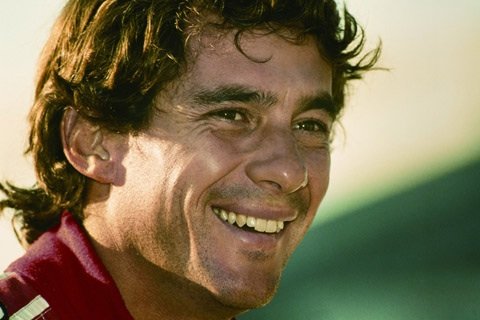 I found it interesting that we encounter him the same way the international community did. We see him as a kart driver and through his career. Was that always the idea? Did you hit the three act structure from there?
I found it interesting that we encounter him the same way the international community did. We see him as a kart driver and through his career. Was that always the idea? Did you hit the three act structure from there?
We knew the middle would be the rivalry, we knew the ending. We knew we’d probably slow down time and go into detail during Imola, this cursed weekend. I knew he meant a lot to Brazil. I hadn’t really seen the footage before of the funeral and just the scale of what he meant to people. And actually, the Super-8 footage [of Senna as a boy] I always wanted to end with it. I always thought that’d be a beautiful way to end. Rather than ending on such a downer with him so unhappy, to end with him talking about, “this is why I do it, this is what I love.” And seeing him back as a kid, seeing him so beautiful and healthy and in his prime. I wanted him to have the last word in the film, not to have others talking for him.
What we didn’t know until very late on was how to open the film. And we did many version of the movie and at one point we [inverted the ending]. We had another section that I really liked which is actually all about the country of Brazil and what a state Brazil was in. The violence, the poverty, and you’re thinking, “what is this? I’m expecting to see a film about a racing driver? What the hell is this?” Then you cut to the young boy [in] Super-8 and you had someone holding up a card saying “Senna,” hand-written, and you think, “this is a country with huge problems, and this is a guy that’s gonna solve ’em.” I really loved that. It was quite an unusual opening. In the end, the simplest one was to finish and start with a kid. He just wants to drive, he just wants to drive as fast as possible. He doesn’t want the money, he doesn’t want the politics. He’s already got the money. He doesn’t need the money. And that was simpler and probably, in the long run, the neater top and tailing of the film. But it took us two and a half years to get there. A long time.
As someone who never really dabbled in documentary, was his story what drove you to it? Especially as someone who doesn’t seem to like Formula 1 all that much.
Partly, it’s sports. I’m a big sport fan, so I’ve always wanted to make a film to do with sport. I watch everything and I try to play everywhere I can. And I’ve tried to develop screenplays and just doesn’t work on paper, I just don’t buy them. So when the producer, James [Gay-Rees] and Manish [Pandey] the writer approached me…funny enough, I never would have originated the film, but the fact is they approached me and it suddenly made sense. Yeah, why not? It would be interesting to try something different, to do a documentary about a real person [that deals] with sport. I know he’s a legend, I know everyone loves this guy. Don’t screw it up or you’ll never be able to go to Brazil. But then the doubts were how do we make it engaging for non-fans? How do we make it emotional? The guy’s always got a helmet on, you can never see his eyes. He’s covered in cigarette logos, he goes round and round in circles. So there was enough there for me to realize it would be a great challenge but I didn’t know how to make it a movie.
When they approached me, it was set up in a much more conventional [set-up]: forty minutes of archive, forty minutes of talking heads, ten minutes of something else. So I said, “ok,” and that’s what I agreed to. Then we started to do our research and the more I started to look at our material I said, “this is unbelievable. I can’t believe there’s a camera there! I can’t believe there’s a camera in that meeting! I can’t believe there’s a camera on his shoulder there! I can’t believe they said that!” And the more we looked, I was like, “why do I need talking heads?” Also, I was kind of nervous about that part of the process because I’d never done that before. I just thought, “what am I going to ask them that they haven’t been asked? How am I going to get anything new?”
Then the honest truth is I’m going to be able to interview everybody but Senna, so the main character isn’t going to be able to have a voice while everyone else gives their opinion, which I was nervous about. So I delayed the interviews as long as possible, using any creative technique I could come up with. Any excuse to not go and interview someone and to [take] as much time as possible cutting the archive. And the more we showed it, one by one, everybody [agreed] this is the only way to do it. So we did do interviews, I shot them. But we didn’t use the picture. You [just] hear the voices. The answer was just time. And because this was a studio film–this was Working Title at Universal–we were never in a rush. They were able to give us time to keep cutting and keep cutting. The cutting process of this film [was extensive].
Everybody loved the film, everyone’s really happy, but lose an hour. So every day we’d go into an editing suite with the editor and go, “we gotta lose twenty minutes. Let’s take out this whole sequence.” One guy would say, “you can’t take out that, take out that.” And another guy would say, “no, don’t take out that, take out that.” Nobody could agree on what we had to lose but everyone agreed the film was too long. Not easy.
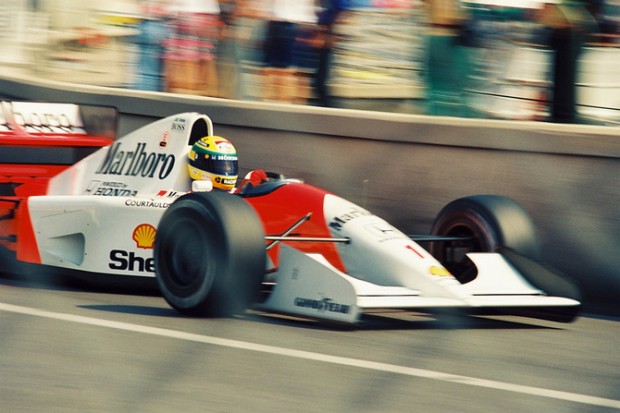 Did you agree to the immersive idea of the film before or after you got the key to the Formula 1 vault?
Did you agree to the immersive idea of the film before or after you got the key to the Formula 1 vault?
Yeah, really early on. Mainly because I knew the rivalry was all there. Then we saw the final race and saw some of the footage of how unhappy [Senna] looked. Then we found that final lap of him in the car. It was unbearable, tense. Even if you don’t know what’s going to happen, there’s something in that shot, something transcendental. I’m not aware of any other cars, I’m not aware of the crowd, there’s just something…he’s flying. It’s just perfect, it’s the perfect lap, but there’s something in there that makes you know it’s going to go wrong.
Especially compared to the earlier scene when that camera angle first popped up I was taken aback by the speed and beauty of it. But there was something different in that last shot.
If you know, you know. If you don’t know, you sense it. And actually, the way we went about it, Manish, the writer, and I cut together a short film to show to the financiers without interviews [showing] how it could work. It was a twelve-minute short and it had all of the key beats, and, like, 95% of that short was in the movie. We [presented it] saying this is how it could work. It was YouTube, most of the quality of the footage. But [Working Title] liked it enough to send it to the head of Universal and they liked it and approved it. For me, it was quite an early on process of thinking…. Y’know, when you make a film, the director has to have an angle and that was my angle. It took two years to get everyone to agree and believe it because, you know, in When We Were Kings there were interviews, [an opening] with Norman Mailer. Touching The Void has interviews. Man On Wire has interviews.
But all of them–most of them, apart from When We Were Kings–you’re interviewing the main character. The people there are telling you their story but I just kept coming back to not wanting to have [Senna’s rival] Alain Prost‘s opinion on him. I want Senna to tell me what he’s thinking. Once we had the idea, our brilliant team of researchers around the world were sent off to find something in 1989 to bridge this scene and this scene. Then they’ll go away and come back with something and it would be invariably something else, but it’d be really good and [we’d] actually have to re-write the script. “It won’t happen here, it’ll happen here. We’ll use this and not that.” So we were constantly changing the story cause of the footage that was turning up.
In terms of the script, how much of it was an actual script? Was it a threadbare idea of how things were going to work out or did you have scenes you wanted or what you wanted to get across?
It was an interesting process. I really enjoyed it because I don’t like the rigidity of film making. I think films should be…whatever it takes to make the right film, do what you gotta do. The structure is quite static in a way. Manish, being the knowledgable one, he wrote an outline. I read the outline before I came on board. It was twelve page, ten page [rundown] of the decade, with everything tucked in. It was huge, it had everything. Bit by bit we went through it and tried to simplify what was going to be in the film. There were four world champions, we took two of them out. We didn’t really go into Nelson Piquet who was a Brazilian champion before Senna. We don’t go into English champion Nigel Mansell.
Let’s focus on the key story: Prost and Senna. We don’t care about the engines, we don’t care about the tires, we don’t care about the point system (it’s so complicated, you’d never understand). No one cares. Get rid of all that. Now for the fans, [they’ll say], “no, that’s really important, cause he’s only half a point ahead of–” no one cares. So it was all this process of elimination, taking things out. Then, while we were cutting, the editor and I would be looking at the footage, Manish would write the screenplay version which was, like, 180 pages, color coded. There would be one color for footage we know exists and that we have, one for footage we think exists but we don’t have, one color for what we want, and another color for just audio. He would put the whole thing together and say “well if you take this audio from this commentary from the BBC from 1989 and put it together with the picture, buh-dah-duh-dah-duh-dah.” That would be for the editor, really, to try and understand how you can construct it.
It was really interesting and an unusual way of working.In a way, the script was often one step behind the picture but it was good for the editor to have something to read so that he could say, “we don’t need this” and edit it. I’m visual, so I like working with the picture, with what I know I’ve got. I was always working on the cut on another Avid [editing machine] myself ahead and doing the rough cut so the editor could then tighten [it] up. I was laying in the music and doing all of that. So everybody was doing their own thing at the same time. It was a kind of factory.
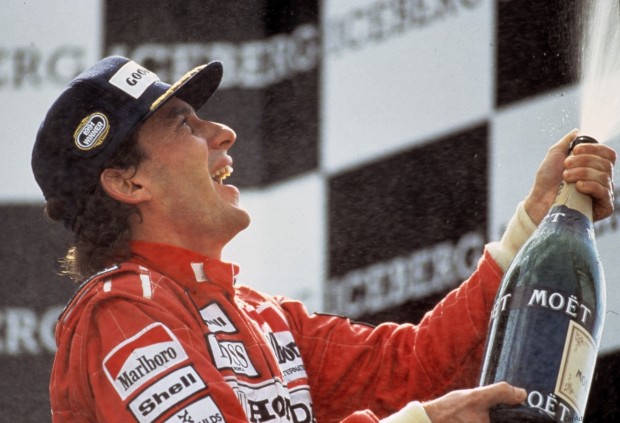 It was sort of circuitous which works well for the subject, too.
It was sort of circuitous which works well for the subject, too.
Yeah, yeah, and I think documentaries have to be like that. They don’t work in a classic [way of] write a script, raise the money, shoot it, cut it. In this case we were cutting, then we were researching, then we were writing, then we were re-cutting and it worked for this film. It was the only way to do it.
There are certain documentaries that will be objective and some that are subjective. It seemed like this was more subjective. This was Senna’s story. In that way, how much did you want to villainize Prost or did he sort of do it on his own? He does play a perfect foil.
He’s the rival, there’s no denying it. And we’re not putting words in his mouth. We obviously have to make editorial decisions but I did not go into the film as The World’s Bigggest Senna Fan and I [don’t] like Prost. I could not believe that Senna crashed into Prost at 160 miles an hour. He was famous for that in Europe. The English journalists, the French journalists really attacked him for that and for the fact that he talked about God a lot. They didn’t like that.
Once we started putting the film together, like one would do in a drama, you look at it and you say, “well what was the motivation? Why would anyone want to do that?” And then you track backwards and go, “well hold on, he really got screwed there! And hold on, Prost turned into him but Senna was the one who got fined, Senna’s the one who got suspended.” And then you realize, weirdly enough, “I kind of understand why he did what he did,” y’know? And that was it.
We were just showing what happened and it turns out, yeah, we’re telling the story from Senna’s point of view and Prost was a great rival. Both of them were doing whatever they could do to win; mentally, psychologically, [trying to] mess up the other guy. I hope we’re not being too unfair on Prost. But I don’t think if you’re a French Prost fan you’re going to like the film in the same way because if you see it from his side, you’re going to have a very different movie. That was it. We tried to be fair to both. Jean-Marie Balestre, who ran [Formula 1]…I think he was up to a few things and he, being a Frenchman, did things that helped the French driver. That’s what happened. That’s the truth.
It seems as if Senna doesn’t have a lot of faults in this. Was that a concern for you?
He drove at someone at 160 miles an hour. He could’ve killed someone.
At least it was justified though! I could give him that.
It’s interesting you say that. A lot of people really didn’t like him. Because of that, because he was known as being a tough guy on the track. He was the aggressive driver. “I’m coming through. If you don’t get out of my way, we’re going to have an accident.” There’s that scene with Jackie Stewart [a legendary driver] when he accuses [Senna] that he had more accidents than all the other champions put together. Thing is, whenever somebody attacked him, I loved the way Senna answered it. “I’m a race car driver. What do you want me to do? When there’s a gap, I go for it.” I’m with him! “I’m not content to come third, fourth, fifth. Some of you are, I’m not.” So whenever he was attacked, he found a brilliant way of answering it. I’m not making that up, that’s just him. He was too clever, so intelligent that he could justify everything that he did.And if you’re a fan of his or you get drawn into his world, you buy it. If you’re not, you’re not going to buy it. Maybe we as film makers, we bought it. I’m with him. I totally understand that’s his way of driving, that’s his way of living.
The religious thing, people definitely didn’t like that. They don’t like the idea of someone talking about God and driving a racing car that fast. In Europe, at that time, it wasn’t [done]. But when Prost accuses him of being dangerous, again, Senna’s answer is fantastic, but it’s in Portuguese. I don’t know if you noticed but he wouldn’t talk about God in English because he’d be attacked for it. He would only talk about it in Portuguese to his own fans in Brazil. “Just because I believe in God doesn’t mean I think I’m immortal. Doesn’t mean I think I’m not going to get hurt.” And again, for me, whenever he was attacked, he answered it in the best possible way. We were not trying to clean in up in any way.
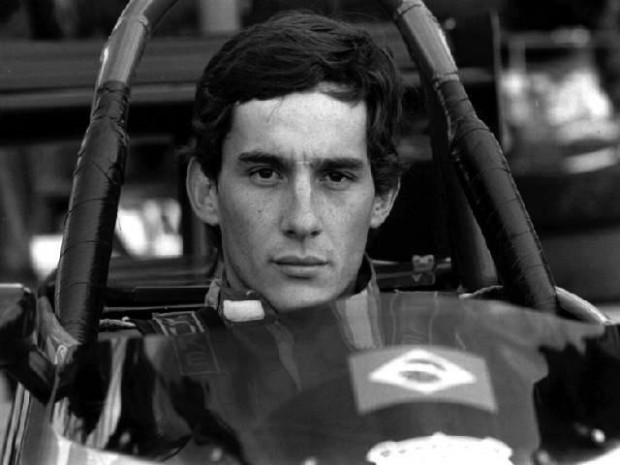 What would you say is the central conflict of this story? It seems almost as if it’s Senna against racing, to a certain extent. Especially in those back room scenes.
What would you say is the central conflict of this story? It seems almost as if it’s Senna against racing, to a certain extent. Especially in those back room scenes.
Yeah, it’s a bit like the outsider. My producer James used to say, “he’s a good guy in a bad world.” He’s a naive guy who just wants to race. “I want to be as fast as possible. And if I’m faster than everyone, then I’ll win.” It’s not as simple as that in Formula 1. It’s much more political, much more complicated. Being the fastest is not going to solve all your problems. That’s kind of what happens. I think that’s the simplest way of putting it, James’ line.
How great were those scenes of the pre-race?
I love them. I love them. My favorite scenes.
At what point did you find them?
I came across a few of those on YouTube while I was doing my research.
Really? They were that public?
They’re not public, but somehow they ended up on YouTube. I saw a couple of them and we just suddenly thought, “this is the way. This is how we get inside the helmet. This is how we understand their characters.” Cause really, a lot of the time, there’s a microphone and they’re performing, almost, for the camera. Here they’re not not performing. The cameraman is a part of [the] Formula 1 community so therefore they’re trusted; they’re not journalists. The drivers are being themselves and this is a key moment, an hour before they’re about to race for the World Championship. The one that nobody’s ever seen before is Germany, 1991 when they argue about the cones. I love that. It’s one of my favorite scenes in the film.
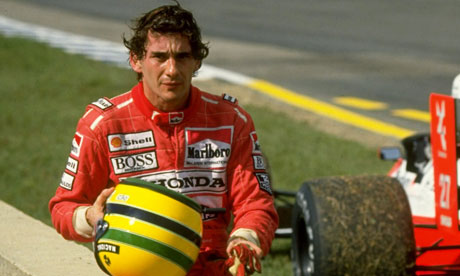 Absolutely. Senna takes a weird stance where he almost becomes a martyr for safety. And that scene specifically is very pointed where it seems that no one cares about the drivers, especially the person in charge of the whole thing.
Absolutely. Senna takes a weird stance where he almost becomes a martyr for safety. And that scene specifically is very pointed where it seems that no one cares about the drivers, especially the person in charge of the whole thing.
And yet it’s funny, it has humor. There’s this amazing character of Senna who because he opens his mouth and speaks up changes something and everybody agrees. You get the idea that none of those other drivers have even read those notes [given to each driver pre-match]. In fact, the people that made the rules haven’t read the notes, y’know. And then you meant Jean-Marie Balestre who’s this amazing character who ran a sport and the most quoted line in the film, world wide, is [his], “the best decision is my decision.” It’s the scene I show people who aren’t fans of Formula 1 at all.
I show [that scene] to film students as well, just for the camera work cause you got to realize that the person who shot that had no idea who’s going to talk next. One camera guy, on the side, in real time, one take wonder. Knowing when to be on Senna, knowing when to be on Balestre, knowing when to be out wide, whip-panning, doing the sound as well, it’s just brilliant camera work. If I had done that as a drama how many times would I move the camera? Get a wide shot, get a close up, get the reverse, re-light, move that there, move that there,. This person is in one place the whole time on a zoom lens so it’s brilliant journalistic camera work that feels like a drama.
And how did you think about it as a visual director? Were you pleased with the shots? Some of them look incredible, especially with the pace of the film. It is a racing movie that happens to have a biography along with it.
I’m glad you say that. Look, I had great editors, I had a great team: Gregors Sall and Chris King. Gregors, who I guess did a big picture in a way. He cut a lot of the emotional sequences. He put a lot of the bigger scenes together. And Chris King is just brilliant with pacing and with music and tension and getting the movie ripping along. The worst thing I could have done, which would’ve been maybe more natural for me coming from a more European style of film making, is to make a slow film about a racing driver. Thank God it isn’t! Thank God it’s exciting and it really flies along. I had a very good team and one has to mention the brilliant composer, Antonio Pinto. He’s Brazilian. He did City of God, Central Station. I think the music and the editing really make it a cinematic experience.
Senna opens in Los Angeles and New York this Friday, August 12th. A full list of openings in the United States can be found here.

